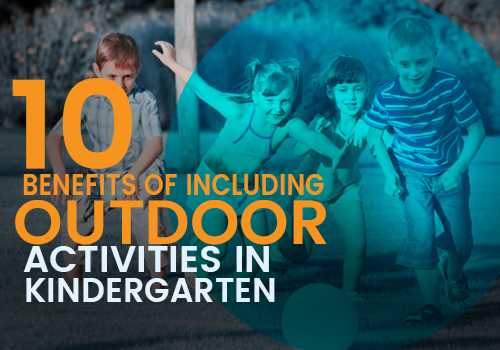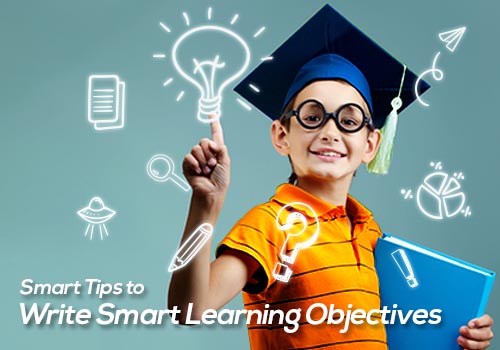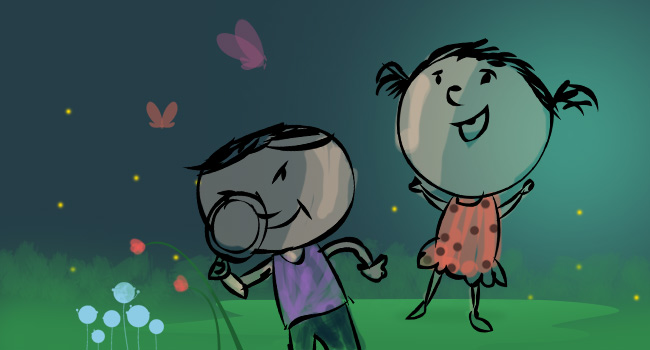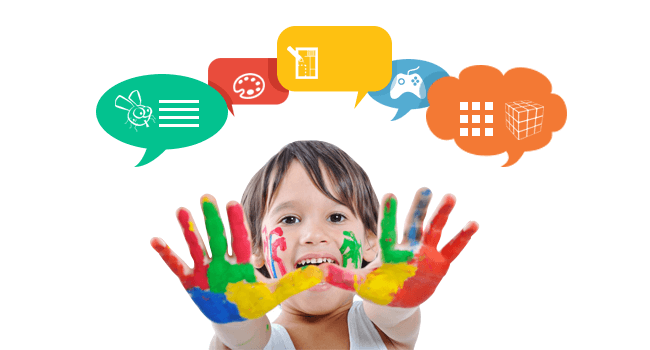Tagged as powerhouses of energy, kids are constantly seen running around the house and bumping into things. Here, they are playing within the four walls of their homes; the restricted way. Contrast this with outdoor activities that kids can be introduced to. Outdoors present exciting opportunities for kindergarten kids when they can engage in any activity of their choice without conforming to any rigid rules and boundaries. They can run, skip, hop and shout and partake in fun activities, without being hassled by any limitations of space when they step out to play.
If you as parents and teachers handling kindergarten kids are keen to know about the benefits outdoor playing has on them, here they come.
- Open Spaces Promote Agility
First and foremost, it is very important for kids to be introduced to playing outside as open spaces allow them to build their physical stamina while promoting a great deal of agility. Kids who play outside stay active and expend their energy in the best possible manner. They tend to eat well too. To sum it all, outdoor activities will help in the development of healthy habits which are initiated at the early stages of your kid’s life can stay with them for life.
- Fresh Air Does Wonders
Kids should be encouraged to play outdoor games which can be as simple as running around in the park or to sweat it out by playing their favorite game on a children’s playground. When they do this, they inhale fresh air and this is the positive factor that peps up their spirits.
- Social Interactions Are Nurtured
Getting out of one’s home can be a blessing to any kid who wants to socialize with kids of his age. Playing outdoors will not only allow kids to expend their energy but also offers a platform for healthy friendships to develop.
While some kids are outspoken, there are others who are introverts. A shy kid can interact with other kids without any inhibitions in a natural setting when compared to a closed room. Outdoors allows him to open up with his friends. This way, outdoor activities can pave way for social interactions and the development of new friendships that can turn into life-long associations.
- Improves Attention Span
The ability to focus and concentrate on a task at hand is of prime importance for kids. By the time they are 5 years old, they should be able to stay focused on a certain task for an average of 2-5 minutes. This is about having an attention span and this is seen with kids who enjoy what they are doing. Physical exercise helps a great deal to improve their concentration.
And what best way to help kids flex their muscles than to engage them with a good outdoor sport?
Parents and teachers can employ outdoor toys like jump ropes and balls as playing instruments for their kids. Outdoor activities are enjoyed amidst natural settings. By becoming a part of the natural environment, kindergarten kids can improve their attention span by engaging in a game or activity they love the most.
- Helps Keep Stress at Bay
Boredom is one thing that causes stress in kids. When they are just idling away at home, they turn irritable and sluggish. It is during such times parents and teachers should step in and introduce them to outdoor activities. Providing a healthy distraction to kids from stressful conditions, stepping out and playing with other kids in open and green spaces can be relaxing and rejuvenating as well. And after their outdoor play, you will be surprised to welcome your kid who will be at ease with himself.
- A Good Dose of Vitamin D
There is a growing population of kids which is deficient in vitamin D. This is a vitamin that is absorbed by the skin only when it is exposed to sunlight. All in an attempt to provide your kindergarten kid with a good dose of vitamin D, check out the safe and cost-effective means of better health.
Just permit him to play outdoor and you are all covered. The absorbed vitamin D from sunlight strengthens his bones and keeps symptoms of diabetes and heart ailments at bay.
- Improves Eyesight
Another health benefit that your kids can enjoy by playing outside is that they can improve their long distance vision. It is important for kids to be exposed to daylight as a precautionary eye-care measure that improves their vision.
- Fuels Their Creative Instincts
Teachers and parents of kindergarten kids can encourage outdoor activities through some creative ideas. All for the sake of making outdoor playing a pleasure, they can accompany their wards and prompt them to collect things which they like. Guardians can then assemble all the scrap into a beautiful collage. This collage can be hung on the wall of your kid’s bedroom as a pleasant reminiscence of his outdoor adventures. This can be an innovative exercise to teach your kids the natural diversities in colors and textures. They will earn to appreciate natural gifts in the form of moist sand, twigs, pebbles and vibrant flowers.
- Helps Your Kids Sleep Better
Give your kid his much-needed break after his kindergarten session, by allowing him to play outside. Let him do whatever he wants; let him play around and sweat it out after a healthy evening snack. This regime will encourage your kindergarten ward to exert himself in a manner he likes. This practice will ultimately yield best results in the form of improved sleep patterns. Your kid will enjoy a restful night and will be all set to step into his kindergarten with renewed vigor.
- Outdoor Activities – A Key to Holistic Development
Providing a platform for physical fitness, outdoor games when introduced at the kindergarten level lead to the overall development of kids. A sound mind resides in a healthy body. Establishing a strong connection between mind and body, outdoor games promote better mental health in kids.
Research has proven that kids who step outside to play turn into happy and confident adults who can keep complaints like anxiety at bay. Studies indicate that kids who play outside enjoy a great deal of intellectual development when they get to hone their problem-solving skills. All thanks to the unstructured forms of outdoor games, it is through these activities that kids develop a creative bent of mind, looking at a particular object in different ways.
Closing Thoughts
All work and no play makes Jack a dull boy! So true to this adage, if kids in their primitive stage of learning are encouraged to play outside, they will look forward to their friendly interactions with their mates which can ultimately become a way of life. Undoubtedly, a life that is positively impacted by the benefits of stepping out to play manifests in the form of a healthy and happy society.




